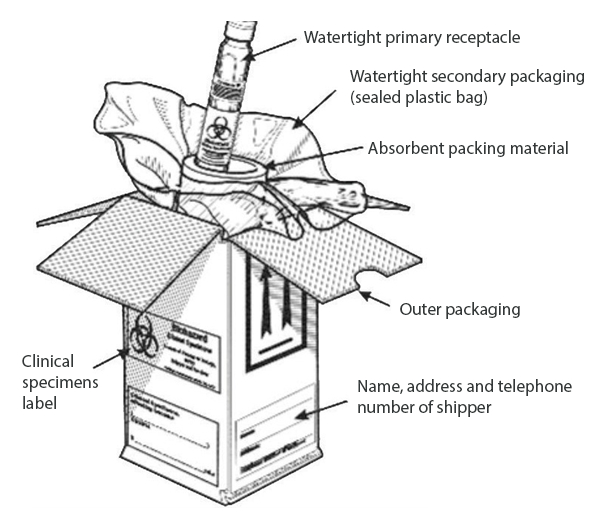Packing and sending HeV samples for testing
Veterinarians submitting samples for HeV testing are responsible for safely packing the specimens.
Find out the types of packaging you can use, and how to prepare samples that comply with transport regulations.
Types of packaging
HeV samples require multiple layers of packaging so they can be delivered without risk of contamination.
Primary receptacles
Primary containers hold samples of blood, urine, or other substances from a single patient. These include:

- tubes
- bottles.
Primary receptacles must be packaged into resealable plastic bags.
Secondary packaging
Secondary packaging is used to contain the primary receptacles. These can be:
- a polycarbonate bottle with screw lid
- a large heat sealed, or zip locked plastic bag, containing absorbent cushioning materials such as cotton wool.
Outer packaging
A container such as supported polystyrene box with cold bricks.
Preparing samples for testing
The samples need to be kept refrigerated, not frozen.
Swabs should not be transported dry – in order of preference, use:
- liquid virus transport medium (VTM)
- saline.
Pack and label samples
Pack and label samples
Wear disposable gloves while preparing HeV samples for laboratory testing.
- Make sure each primary receptacle is uniquely and clearly labelled with the specimen details.
- Put samples from each animal in separate primary receptacles.
- Samples from sick horses must also be double bagged – clinically healthy horses only require single-bagged samples.
- Check that the lids on sample containers are secure without opening the bags.
- Place each bagged sample in separate secondary packaging.
- Use enough absorbent material as necessary between the bagged primary receptacles and the secondary packaging, so it can soak up all possible spills from breakages.
- Be careful not to open the zip locked bags immediately around the primary receptacle.
- Fill out a sample submission form ().
- Include the property identification code (PIC) and address where the horse is located, along with the full history of the case.
- Clearly write on the form 'Hendra virus exclusion – urgent priority'.
- Fill out the horse submission questionnaire ().
- Place the form and questionnaire on the outside of the secondary packaging, so they can be read before the samples are opened.
- Place the secondary packaging inside the outer packaging.
- Don't reference exotic diseases on the outside packaging.
Arrange delivery
Arrange delivery
It is important to submit HeV samples in the shortest time possible and notify Gribbles Vetlab of the submission before it is delivered.
Advise PIRSA's Biosecurity division and the laboratory of high urgency if there is high suspicion of disease, or significant human exposure. Quicker turnaround times for test results are possible using special courier services and weekend testing.
- Call the Gribbles laboratory between 8am and 11pm, Monday to Friday, to arrange a courier:
Phone: (08) 8202 3300
After hours: 1300 307 190. - Call the EAD hotline to notify PIRSA.
- Consign or deliver the samples to:
Gribbles Vetlab
33 Flemington Street
Glenside SA 5065
